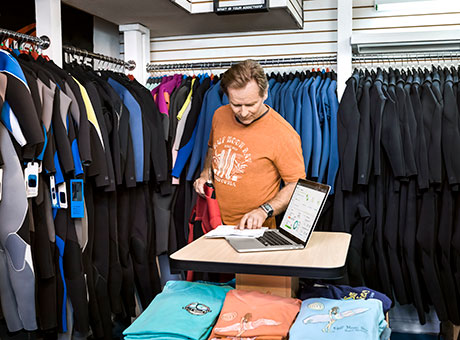Good inventory management practices help your business clear out older goods to make room for new items in your storeroom or warehouse. But what do you do when your goods no longer fulfill their purpose due to newer market alternatives, poor customer demand, or overstocking? While writing off this stock as a loss helps you get it off your books, getting obsolete inventory out of your space takes a bit more planning.

How to Manage Obsolete Inventory
Selling Obsolete Inventory at Deep Discounts
If you operate a retail establishment, one way to rid your shop of obsolete inventory is to offer it to customers at discounted prices. Depending on how much you need the storage space, you can roll out sales with small percentages off and then move to deeper discounts if items don’t fly off the shelves. Just be sure to adjust these prices based on value rather than cost to you.
Avoid common pricing mistakes by studying your small business’ bottom line to see if keeping goods in storage hurts more than it helps profit-wise. It’s easy to put off getting rid of stock that doesn’t move, but taking a look at the numbers can give you that extra push.
Re-purpose Obsolete Inventory Into New Products
If you have obsolete inventory that’s hard to move, consider re-purposing products made from versatile materials, such as clothing and crafts, into new items to grab customers’ attention. For example, if your small business makes adult-size shirts, you can take these apart and re-tool them as children’s wear or doll clothing.
Likewise, you can strip down items with beading, appliques, and embellishments and add those decorations to other items, including handbags and home decor. If necessary, you can take the unused portions to recycling just to get it out of your storage space.
Donate Obsolete Inventory to a Good Cause
Since one man’s trash is another’s treasure, consider donating obsolete inventory to charity to preserve space while helping a good cause. This has the benefit of letting you take advantage of tax credits that come with donating goods to a qualified charity. When you make donations like this, make sure you get a receipt so you have documentation of the donation when you deduct it from your adjusted gross income at year-end.
Work With a Wholesaler or Distributor
Wholesalers and distributors have larger networks of contacts than small businesses, making it worthwhile to seek out quotes when you need to rid yourself of obsolete inventory. Develop good relationships with these pros so you have options if you run into the same problems again, and do your research before contacting wholesalers and distributors who deal with bulk inventory to find a good fit for your products.
When you call or email personnel, make sure you have key information handy, including the amount of available inventory, how much you need for each piece, and how you plan to handle logistics and delivery.
Though it can be frustrating to let go of obsolete inventory at a fraction of the original price, getting it out of your storage space provides room for items that customers want. Be ready to cut the fat when necessary to help your business grow and evolve. Take your obsolete inventory management to the next level by staying informed. 5.6 million customers use QuickBooks. Join them today to help your business thrive for free.


